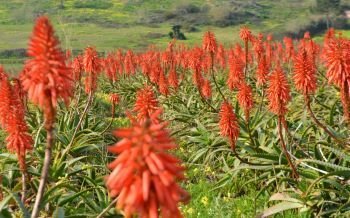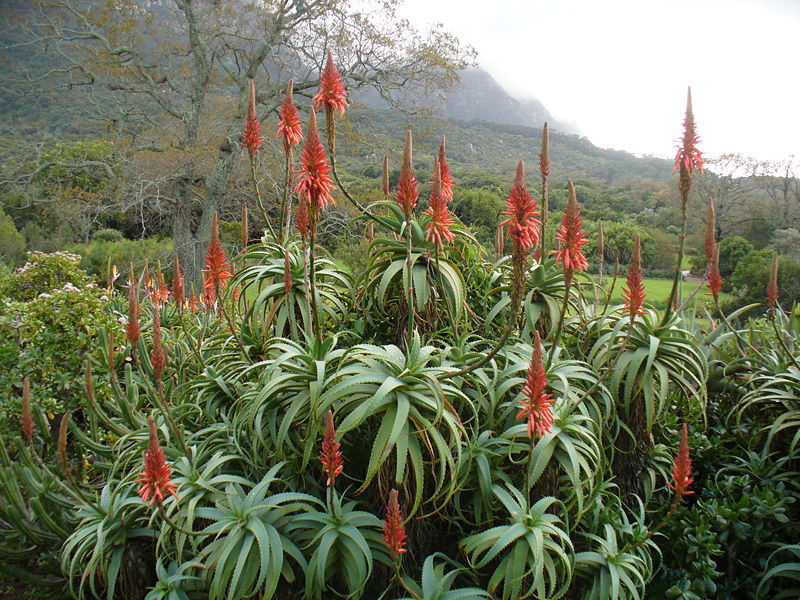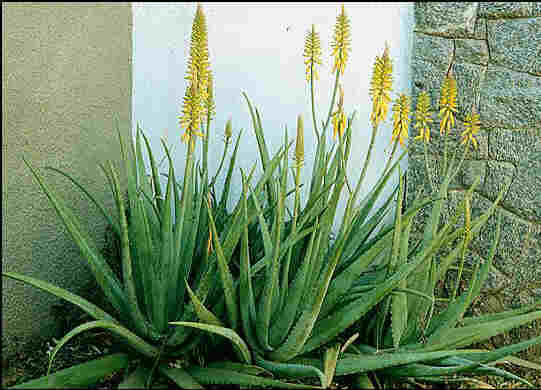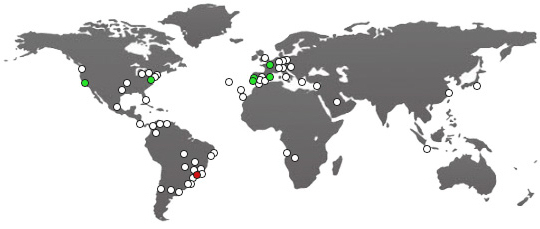Aloe Vera Arborescens (red flower) vs Aloe Vera Barbadensis (yellow flower)

Aloe Vera Arborescens with red flower, has leaves about half the size of Aloe Vera Barbadensis, so it is less profitable for the cosmetics, detergents, fabrics, mattresses, razor blades and other industries, which only use the gel.
However Aloe Vera Arborescens has a greater number of therapeutic properties because it uses the leaf peel, which contains a large number of medicinal nutrients, namely, Aloin in the recommended dose, an important laxative to eliminate constipation.
Dr. Raquel Teixeira - Center for Biotechnology and Fine Chemistry, Universidade Católica Portuguesa, Porto, Portugal, says:
Aloe Vera Barbadensis is perhaps the plant with the most products on the market.
In fact, there are extraordinary characteristics in this plant, but when compared to Aloe Vera Arborescens it loses qualities.
Aloe Vera Arborescens presents the components that Aloe Vera Barbadensis has, but in higher concentrations which makes Aloe Vera Arborescens a plant with characteristics to be explored in the industry.
| Aloes - Mineralogical Quantity | ||
| Mg / 100 ml | Arborescens | Barbadensis |
| Calcium | 103,000 | 12,760 |
| Magnesium | 69,000 | 5,860 |
| Potassium | 287,000 | 46,320 |
| Sodium | 23,000 | 24,270 |
| Zinc | 0,460 | 0,650 |
| Iron | 0,400 | 0,080 |
| Manganese | 5,600 | 1,190 |
| Selenium | 20,000 | 19,000 |
| Boron | 103,000 | 79,000 |
| Copper | 0,020 | 0,004 |
| Proteins | 7,300 | 0,000 |









